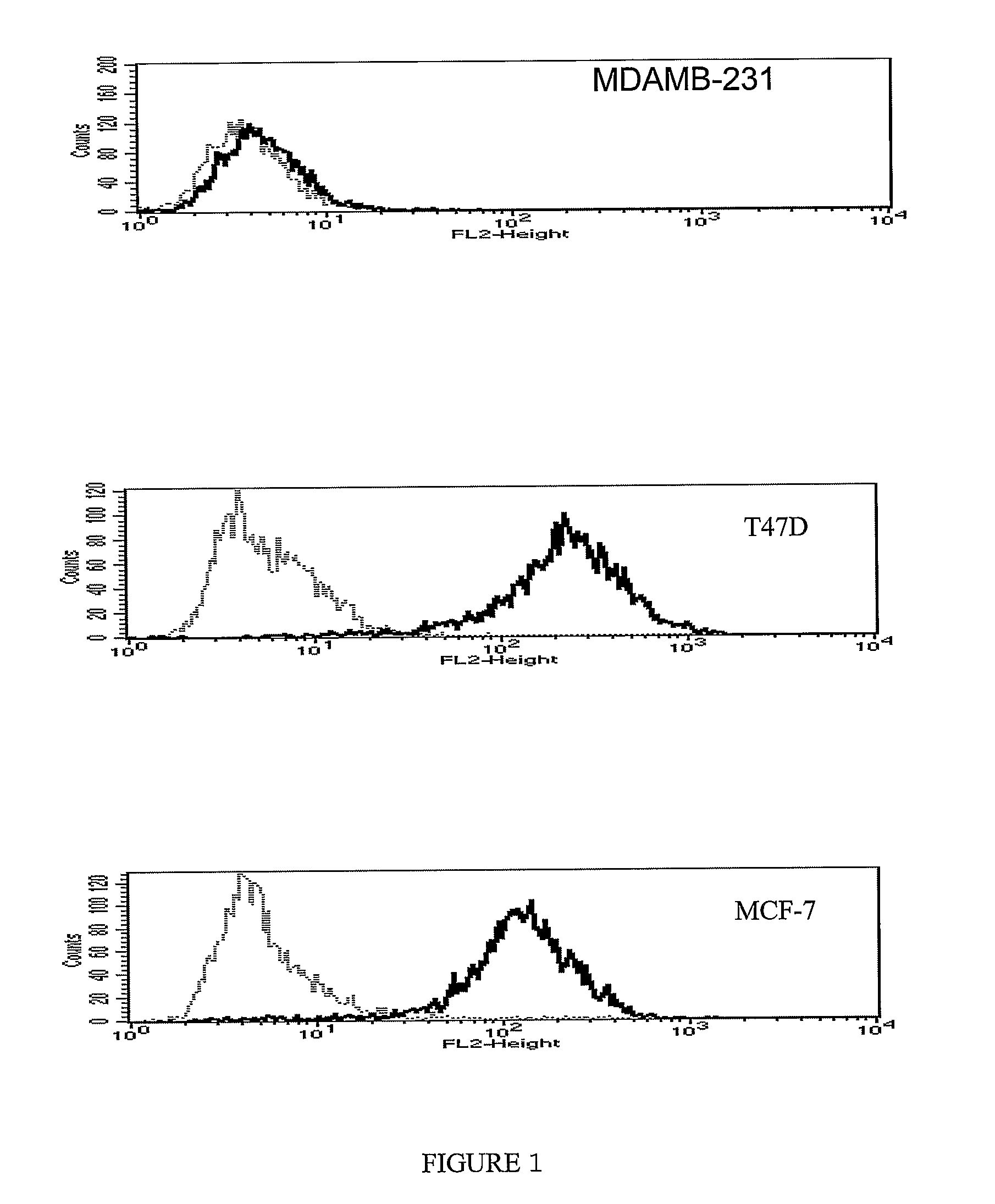Nectin 4 (N4) as a Marker for Cancer Prognosis
a cancer prognosis and marker technology, applied in the field ofnectin, can solve the problems of unreliable detection, serious risk of unclean margins after lesion removal, and low survival rate in comparison with other cancers
- Summary
- Abstract
- Description
- Claims
- Application Information
AI Technical Summary
Benefits of technology
Problems solved by technology
Method used
Image
Examples
example 2
[0128]The study is related to 109 new cases of patients with breast cancer in metastatic phase and aims at:[0129]confirming the presence of Soluble Nectin 4 (SN4) in the patients with metastatic evolution[0130]evaluating the advantage of this marker compared to markers CEA and CA15-3[0131]evaluating if SN4 can be an indicator of therapeutic follow-up
[0132]The results show that SN4 is found in 33% of the patients against 52% and 47% for CEA and CA 15.3. Thus, SN4 detects less case than the two other markers. However, SN4 is detected in 4 cases out of 26 patients CEA− / CA15-3− (11%), 6 cases out of 17 of patients CEA− / CA15-3+ (35%) and 5 cases out of 23 of patients CEA+ / CA15-3− (22%). These results confirm that SN4 improves follow-up in the case of patients negative for one and especially two markers. Thus, SN4 is a complementary marker to CEA and CA15-3.
[0133]The study of the evolution of SN4 before and after treatment has been carried out on 60 patients out of 109. For the 49 other p...
PUM
| Property | Measurement | Unit |
|---|---|---|
| molecular weight | aaaaa | aaaaa |
| pH | aaaaa | aaaaa |
| soluble | aaaaa | aaaaa |
Abstract
Description
Claims
Application Information
 Login to View More
Login to View More - R&D
- Intellectual Property
- Life Sciences
- Materials
- Tech Scout
- Unparalleled Data Quality
- Higher Quality Content
- 60% Fewer Hallucinations
Browse by: Latest US Patents, China's latest patents, Technical Efficacy Thesaurus, Application Domain, Technology Topic, Popular Technical Reports.
© 2025 PatSnap. All rights reserved.Legal|Privacy policy|Modern Slavery Act Transparency Statement|Sitemap|About US| Contact US: help@patsnap.com



